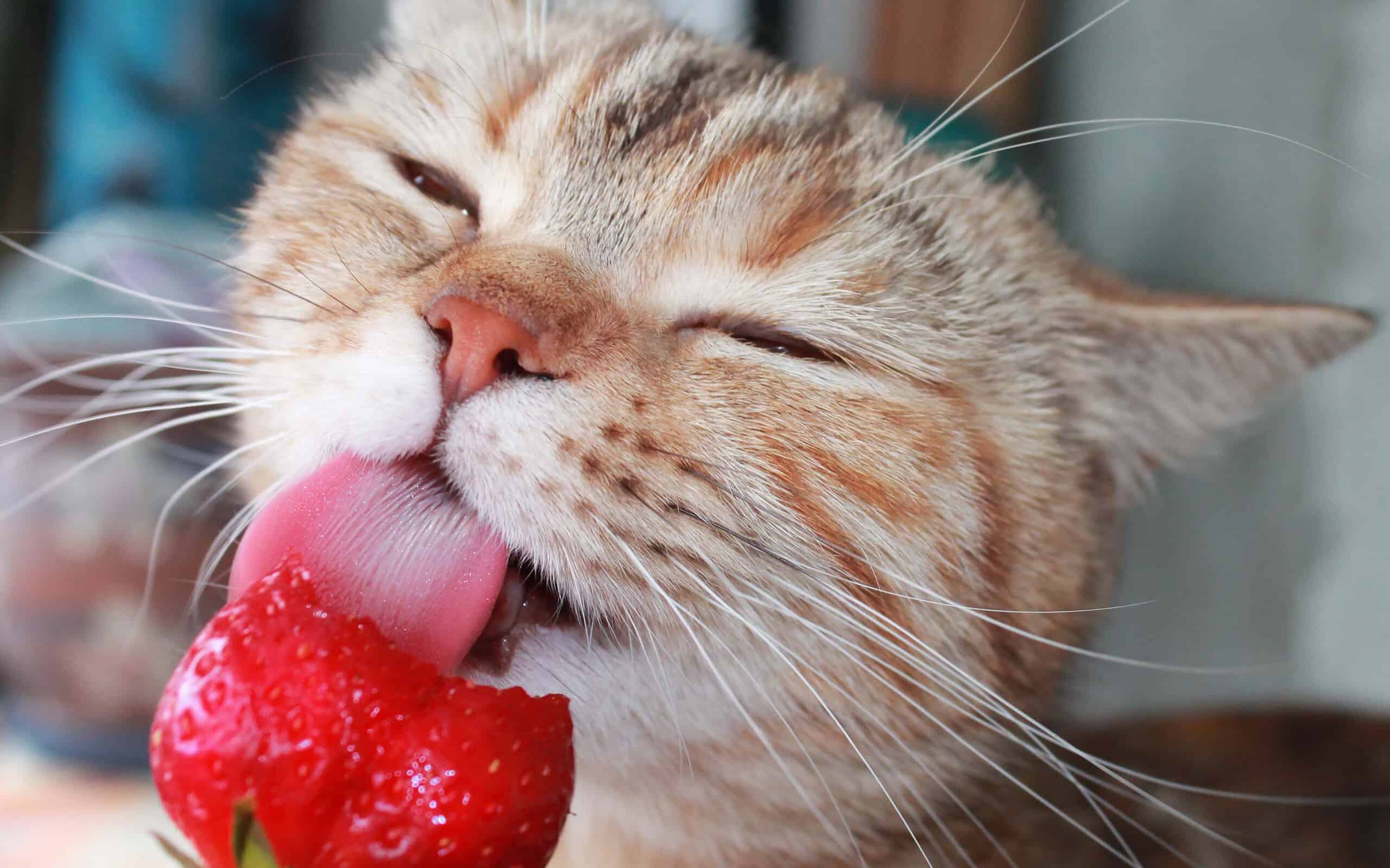Winterizing strawberry plants is essential to ensure their survival during the cold months. Discover effective strategies and helpful tips on prepping your strawberries for winter in this comprehensive guide.
About Strawberries
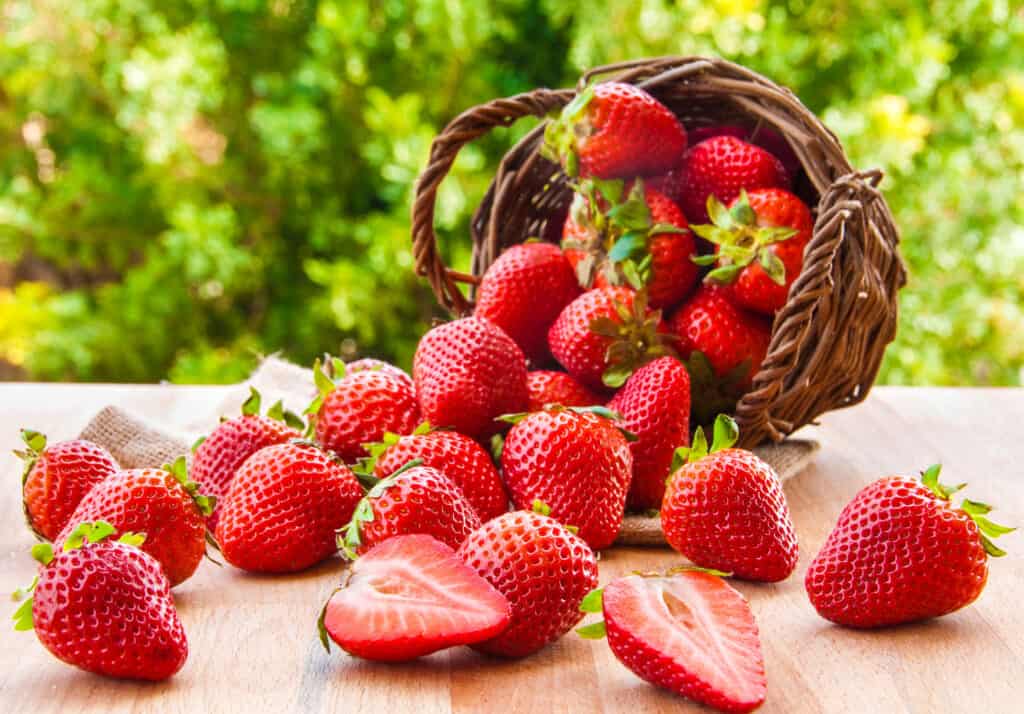
You can grow strawberries as perennial plants in USDA Zones 4-9.
©iStock.com/MariaUspenskaya
Strawberry plants are a favorite among gardeners and farmers alike. They are easy to grow and have a relatively short growing season. They can be grown in most hardiness zones and will produce an abundance of sweet, juicy fruit.
Strawberry plants are perennial, meaning they will come back year after year, and tend to come in two varieties: June-bearing and everbearing. June-bearing plants will produce one large crop of fruit in the early summer, while everbearing plants will produce smaller crops over a longer period of time. Most types of strawberries are hardy in USDA Hardiness Zones 4 through 9.
Strawberry plants can produce up to 1-2 quarts of fruit per plant. In addition to the delicious fruit, the plants also provide a beautiful and fragrant ground cover. They send out long, trailing stems called runners. These runners will root wherever they touch the ground, giving you free strawberry plants!
Strawberries Require a Period of Chill

In order to form fruit, strawberry plants require a dormat winter period of cold weather.
©V_Sot_Visual_Content/Shutterstock.com
On thing that is often overlooking when winterizing strawberry plants, is that they require a period of chill in order to set fruit. If they didn’t we could just take the plants indoors and keep them in a nice climate controlled environment, like a houseplant.
However, strawberries need 200+ hours at a temperature under 42°F. For optimal fruit production strawberries enjoy a cold winter. The ideal winter temperature for strawberry plants is between 32° and 45° for 200-300 hours. If the crown of the strawberry is exposed to 15°F or lower it can be deadly.
Winterizing Strawberry Plants—Why Do It?
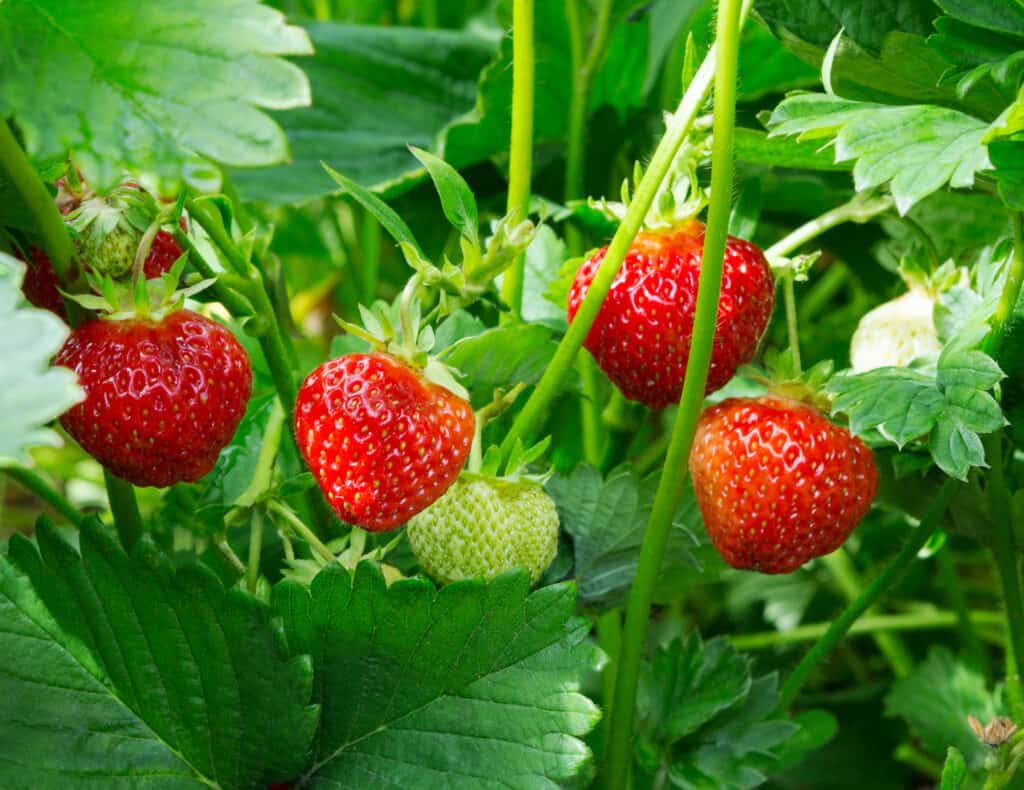
In order to protect the tender crown of the strawberry, winterizing strawberry plants is necessary.
©iStock.com/romiri
Perennial strawberries can survive for a long time if managed well, but they don’t have the thick bark that many other plants have to protect them from cold winter temperatures. Without extra protection, the plants could die or suffer cold damage, which would stop them from producing strawberries. To prevent this, winterizing strawberry plants is an important part of your fall garden chores.
Reasons For Winterizing Strawberry Plants:
- Minimize the damage to tender roots.
- Minimize frost heave. The repeated freeze and thaw cycle can eject lightweight strawberry plants from the ground.
- To protect the buds of the plant from frost in the spring.
- To keep the soil moiste. If you allow the crown of the plant to dry out completely it will die.
When is the Right Time for Winterizing Strawberry Plants?

The best time for winterizing strawberry plants is between November and December.
©willow_girl/Shutterstock.com
The time for winterizing strawberry plants depends on the temperature and amount of daylight in one’s location. As the days become shorter in the fall, the plants start to enter dormancy. Once temperatures drop below freezing for multiple nights, the plants will begin their hibernation period.
In areas with a USDA Hardiness Zone of 4 and 5, strawberry plants usually become dormant by the end of November. If the region is Zone 6-8, this occurs in December. To determine if the plants have gone dormant, check for cold temperatures and plants with wilted, dead-looking vegetation. People living in milder winter climates (Zone 9) may not need to winterize their strawberries as they can often survive without additional mulching or special winter care. In all cases, winterizing strawberry plants must be done before temperatures go below 20°F.
Winterizing Strawberry Plants in the Ground
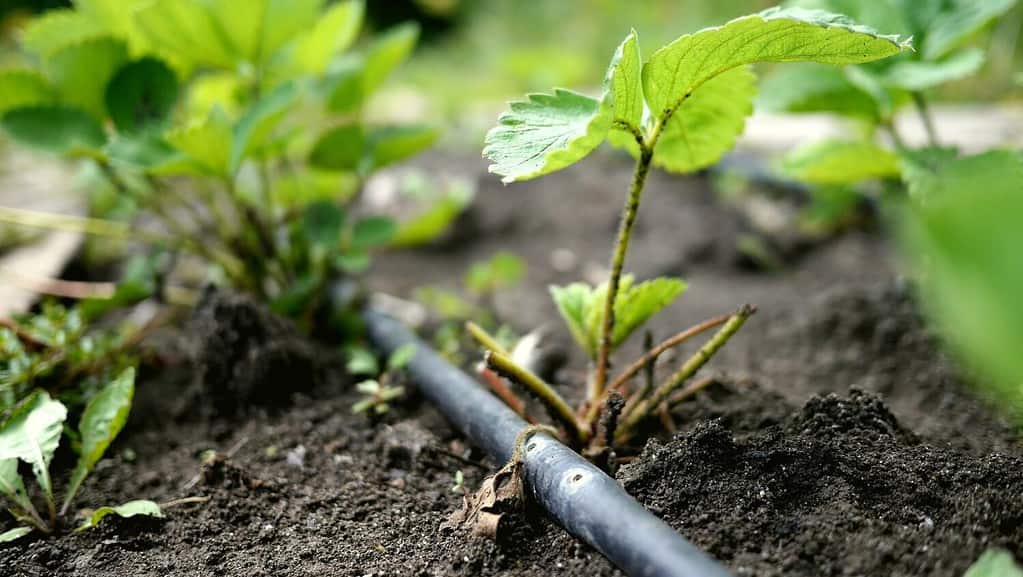
You can cover the whole strawberry plant in 8 inches or more of mulch to protect them.
©Nadeene/Shutterstock.com
To winterize strawberry plants in the ground, make sure the plants are dormant by checking for new growth. Next, remove wilted leaves and any debris from the beds. Then, pile a suitable mulch, like straw or pine needles, over the plants. For colder climates, you need more mulch. Hay is an option, but it can contain grass and weed seeds. Avoid any mulch that traps water or doesn’t allow airflow, as this can cause damage or death to the plants.
Step-By-Step Guide to Winterizing Strawberry Plants
- Check for dormancy by looking for wilted foliage.
- Remove dead leaves and runners and pull any weeds.
- Trim the strawberry plants down to 2 inches above the height of the crown. If the area is large you can use a lawn mower.
- Thin any strawberries that are growing in a thick mat.
- If your strawberry bed has hundreds of runners, you can create rows by using a weed eater or rototiller. Space the ros 12 inches apart.
- Spread a balanced 10-10-10 fertilizer over the entire strawberry bed and water it in.
- Pile up a mound of mulch over the entire strawberry bed to a height of 8-18 inches.
- Do not compact or press the mulch. Leave it light and fluffy for airflow.
- If you’re worried about your mulch blowing away, you can cover it with lightweight burlap, which his breathable.
Wintererizing Strawberry Plants in Pots—3 Ways

Be sure that the mulch is nice and loose like in the above picture, to avoide rotting your strawberry plants.
©knelson20/Shutterstock.com
Caring for potted strawberry plants can be tricky since their soil is more prone to freezing than if they were planted in the ground. There are a few different methods of winterizing these plants, depending on how much effort you’re willing to put in.
1. Bury Them
If the weather isn’t too cold yet, you can protect your strawberry plants in the ground. Dig holes big enough for the pots and place the dormant plants in their pots in the hole. Pack the dirt around them tightly to create insulation, and add mulch like you would with regular plantings. In spring, when it’s warm enough, take out the pots, clean them, and place them back in their designated spots. This will only work if the ground is not already frozen.
2. Move to a Warm Sheltered Site
Take advantage of the natural warmth of your home to help protect your potted strawberry plants from the cold winter weather. Place the containers on the sheltered side of your home, and cover the whole pot with a mound of insulating mulch. Using ambient heat an easy method for winterizing strawberry plants.
3. Bring Them Inside
If you have an unheated garage or garden shed, you can winterize your strawberry plants there. You don’t need to mulch them, but you want to place them against the wall closest to the inside of the house in areas with very cold temperatures. Alternatively, if the shed/garage temperature doesn’t drop below the upper 20s, you can keep them near the outer wall.
In order for your strawberry plants to live through the winter indoors, they need moist soil. If the soil gets bone dry, the crown of the strawberry plant will die. To keep the soil at an ideal level of dampness, sprinkle a bit of snow on top of the pot each week. This will slowly melt and maintain an appropriate amount of moisture without allowing it to become soggy.
Best and Worst Mulch for Winterizing Strawberry Plants
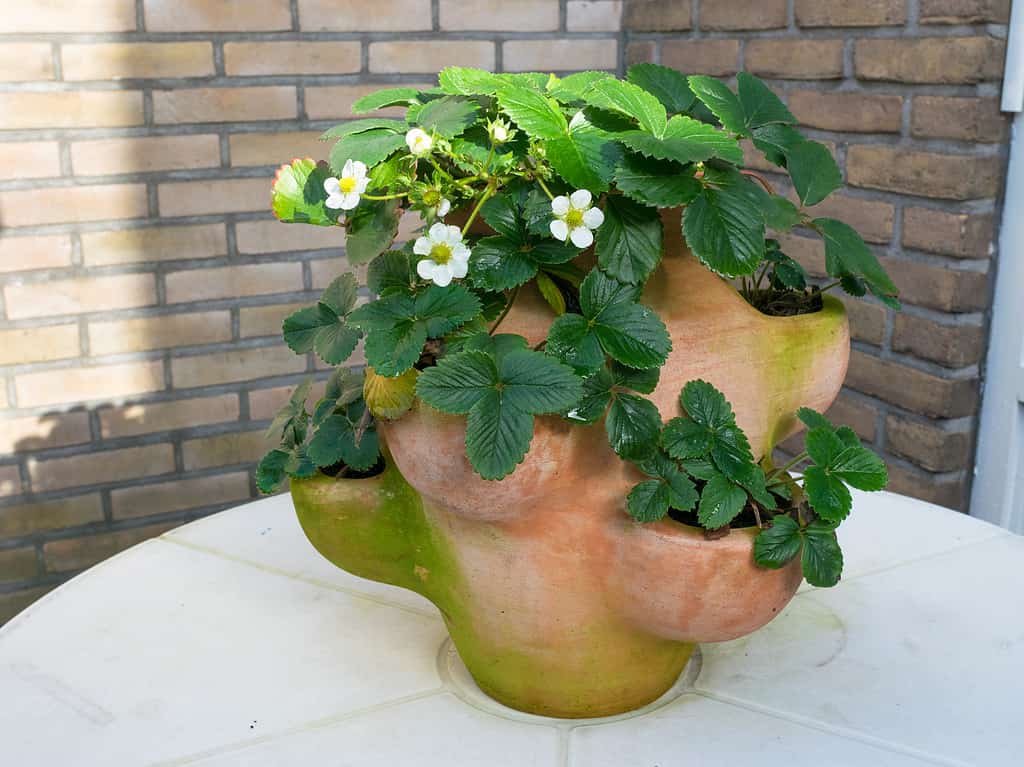
If you have your strawberries in terracotta pots, you will need to bury the pot, or put it in an unheated outbuilding for winter protection.
©Menno van der Haven/Shutterstock.com
Straw
Using straw as mulch is great for winterizing strawberry plants. Be sure to spread it around and over the plants in loose piles, to create an airy covering rather than a dense one.
Pine Needles
Pine needles are a great choice for mulching around strawberry plants. They are lightweight and help to retain moisture in the soil while also providing an insulating layer that protects your strawberries from frost damage. Plus, they’re compostable! Spread them loosely over the beds and make sure they don’t form a dense layer or clump together, as this could cause rotting of the strawberry roots.
Mulches to Avoid
- Grass Clippings- They clump together and causes fungal overgrowth
- Leaves- As they decompose they create a soggy, dense environment that rots the strawberry plant.
- Hay- It is full of weed seeds that will be a nightmare to get rid of in the spring.
When to Remove the Mulch From Strawberry Plants

After the temperatures are warming up in the spring you will see green growth on your strawberries.
©goja1/Shutterstock.com
In the spring, after the temperatures are consistently above 32°F it is time for weekly inspections of your strawberry plants. When you see green growth it is time to remove the mulch.
Once the winter winds have died down and the snow has melted, check your strawberry plants to see if there are any green shoots. If so, remove the mulch and let them enjoy the sunlight. Spread out the mulch into the aisles between rows to absorb spring rain and make walking easier. Leave some of the mulch around the sprouts to keep away weeds, retain moisture, and keep the berries off the ground. Having mulch around is also convenient if there is a late frost since it can offer temporary protection.
Thank you for reading! Have some feedback for us? Contact the AZ Animals editorial team.

